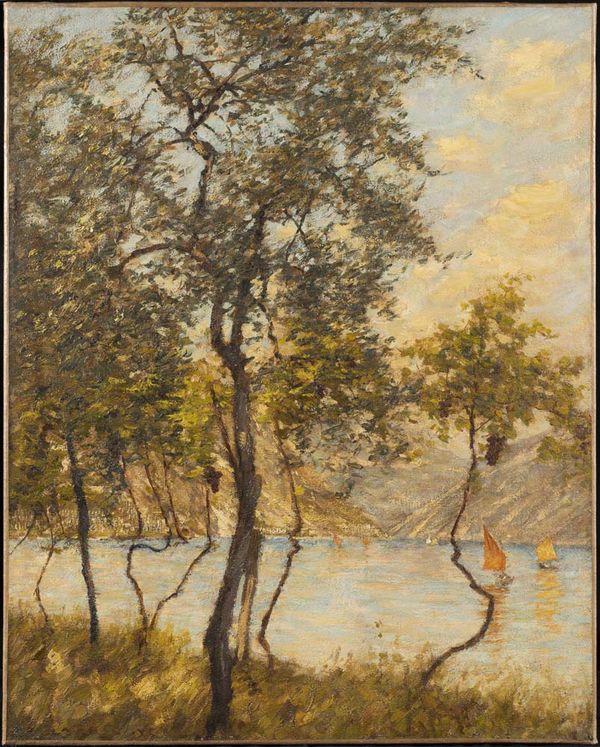Henry Herbert La Thangue
(British, 1859 – 1929)
Henry Herbert La Thangue was born in Croydon, Surrey in 1859. He attended Dulwich College where he met fellow painters Stanhope Forbes and Frederick Goodall. He enrolled briefly at the Lambeth School of Art before entering the Royal Academy schools around 1874. In December 1879 he was awarded a gold medal and a traveling scholarship along with a letter of introduction from Frederic Leighton to Jean-Léon Gérôme, under whom he studied at the Ecole des Beaux-Arts, Paris. While there he was influenced by the rustic naturalist painters of the Salon and by Whistler.
La Thangue spent the summers of 1881 and 1882 working on the Brittany coast with Forbes and a wide circle of plein-air painters, including Bastien-Lepage. In 1883 he and the sculptor James Havard Thomas went to Donzère in the Rhône Valley. In 1886, having completed his studies in Paris, he was the instigator of an abortive movement to reform the Royal Academy.
La Thangue lived for a time in Norfolk, painting scenes of Fenland life in a characteristic square-brush manner. He established a clientele among wealthy mill owners in Yorkshire, many of whom were forming collections of contemporary art, and during the late 1880s he regularly visited Bradford as president of the city's Arcadian Art Club.
In the following years La Thangue's work showed a growing interest in French Impressionism. He traveled to Provence and Liguria, and scenes from these travels gradually infiltrated his work as he increasingly regretted the decline of village life in England. Just before the outbreak of World War I he staged a one-man exhibition at the Leicester Galleries, where he showed a wide selection of landscapes from southern Europe. The exhibition was a critical success and was greatly praised in The New Age (7 May 1914) by Walter Sickert, who found La Thangue's use of the language of painting original. After the war, La Thangue returned to Liguria, and during the 1920s his entire production was given over to scenes of orange groves and gardens.
La Thangue died in 1929.

